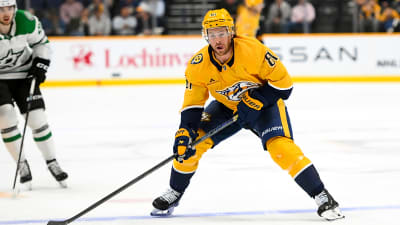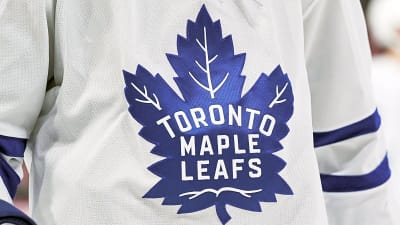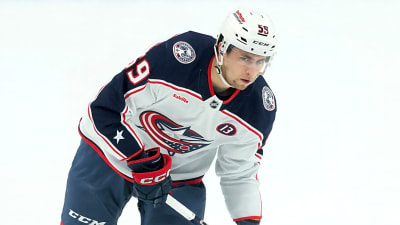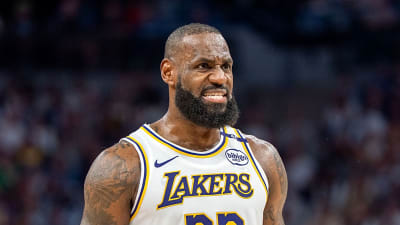
Peter Aubry is the new goalie coach for the Edmonton Oilers. He was part of the Chicago Blackhawks organization from 2015 to 2023 and spent the past two seasons as the goalie coach for the University of Nebraska-Omaha in the NCAA.
Training camp is two months away, and when you play in the Stanley Cup Final, your off-season is much shorter. Aubry will need to get acquainted with Stuart Skinner, Calvin Pickard, as well as the young goalies in the system. He’ll be busy. But what will he be doing? His main priority will be Skinner and Pickard. The Oilers have Kelly Guard in Bakersfield, and they will talk, but with limited time, I’d expect much of Aubry’s focus to be on the NHL goalies.
I was told there are discussions about developing a more robust and deeper goalie department, but it won’t occur this summer. I wonder if part of that is due to ensuring they get the right person to oversee that job? While that could occur in the future, Aubry will focus on the present and spend as much time getting to know Skinner and Pickard.
I caught up with Kevin Woodley from In Goal Magazine and NHL.com on my radio show, Sports 1440, and on Oilersnation YouTube to discuss Aubry and the Oilers’ goaltenders.
What can you tell us about Pete Aubry and what he’s going to bring to the Oilers as the new goalie coach?
I heard a lot of good things when he was in Chicago and sort of was considered to be the goalie coach in waiting, obviously, that never happened. We’ve had a chance to chat a couple of times in the past. I just kept hearing about his openness and his approach, but I don’t have details on exactly what preferences he has, if he has any, or if he’s a guy who adjusts everything to the goaltender he works with.
I think to a certain degree everybody does, but sometimes you have systems that you want to implement, like Ian Clark in Vancouver has a very specific way that he does things in and out of the post. And I don’t have a feel for that with Aubry. So what I did was I reached out to other people who would have a little bit of a better idea.
And while it didn’t get technical, I can give you one, and I didn’t ask for permission to use the name so I won’t use it, but this is an established NHL goaltender who when Peter Aubry was with Rockford and so part of the American Hockey League system at that time, and I’ll just give you the quote, ‘Pete is a genuinely good person, and a good father figure for younger guys. Good emotional and empathy skills, understanding the mental side of the game. Don’t discount the importance of that. A curious goalie mind who is always looking up to other goalies and finding ways to educate himself. All in all, a great coach and a wonderful person.
That doesn’t get into the technical side of the game, but it does sort of give you a hint at that growth mindset. We’ve talked about Stuart Skinner, right, in terms of that growth mindset and always looking for new ways to sort of improve. That can be difficult once you get an NHL job because you often lose the ability to talk to other coaches and things like that. And I know Dustin Schwartz, for example, worked with coaches at various levels in sort of a mentorship campaign, as some guys do, to try and keep those lines of communication open so you’re always learning from the guys you’re actually there to mentor.
So Aubry is, by all accounts, a curious goalie mind, and I think that’s a good thing in a position that changes so often. And listen, I’ll give the example of Dustin and how he went about sort of making sure he was always accessing new information. Make no mistake, this isn’t the case with everyone. People can get a little closed off and especially if your team puts you in a bubble, and there are some in the league that do, who don’t allow you to talk to other goalie coaches, doesn’t allow you to go to conferences and symposiums and things like that, you can get a little stuck in your ways. And Aubry, by all accounts, isn’t that guy.
We’ve seen a lot of Skinner, and there are certain things we know. He’s got a narrow stance, that’s never changing. So, let’s get away from things that won’t change physically, but what are some things that you think Aubry might look to tweak in Skinner’s game?
The challenge here is that for the second straight year, he doesn’t have a full summer of training due to their Cup run. There’s only so much you can do.
If I’m Peter Aubry, I’m probably going to Kelowna this summer. I am probably getting a good look at what Skinner’s doing. I think he’ll be spending close to a month with Adam Francilia in terms of the training. I’d be trying to get a handle on what some of the things are that Skinner’s trying to bring into his game and make sure that everybody’s on the same page in terms of supporting that.
We talked about depth management. We talked about how Dustin Wolf, at barely six feet, plays a more conservative positional game than Skinner does at times. Although, I thought I saw steps taken in that regard last year under Dustin Schwartz. And listen, you can’t have those limitations laterally and play outside your post, East-West. You will get beat, which is why we saw them work on that last year. It did improve, but there is still room to improve.
And so, understanding that concept of depth. The goalies at the top of the league understand that depth isn’t North-South relative to the top of the crease. It’s East-West, too, because that’s where the play is moving so much. And making sure we have a better sort of feel and understanding, and those principles and staples in our game on a consistent basis. I’m watching, from a read standpoint, you can keep working through video with him to make sure that those reads continue to get better and better at the NHL level. And then I’m just trying to get a feel of what makes him tick.
I know Stuart’s worked with an osteopath named James Wendland on proprioception and some of the connection between the body and balance. Aubry will want to make sure he gets a handle on everything that he’s doing in his game. Making sure you see if there are positives there to you, if there are things you need to tweak, and then making sure you’re understanding it, because if these are the voices he works with in the offseason, there are people that can help you.
If you see changes you need to implement when they’re on the ice, there are people you need to be, let’s say, tied to, but you need to understand what they’re trying to do so that everybody can get on the same page. And that may mean, if you disagree with some of it, sort of not usurping, but having those conversations about how you’re going to do things, what fits in your mind and what doesn’t.
We talk a lot about counter-rotation in goaltending. And counter rotation is when the upper body goes the opposite direction we need to go with the lower body in order to load up. And inevitably, with a narrow butterfly, there’s going to be a little bit of that swaying back and forth because you have to go gather that leg. It’s not naturally out wide.
But I do think when I look at when he loses net, when he loses position, when he chases that back and forth swinging is just more than needs to be there. I think there are things that you can support and do to try and limit that. And again, I say this not as somebody who pretends to know better than what’s gone on in the past, because those are all things that Dustin Schwartz would be very well-versed in and very good at pointing out.
I know that was part of their conversations in the early going. So understanding it and being able to teach it and get buy-in and have everybody on the same page are often two different things. But those are some of the areas when I look at his game, I think you can listen, you’re looking at the one or two percent, right? Like little bits here and there, little bits of gains, you’re not reinventing the wheel. And those are some of the areas from the outside, when I watch, I think you can find them still with Skinner.
You mentioned being limited laterally, so let’s dig in on that. Is it just off the rush you’d like him to play a little bit deeper? Are there other areas where you would like to see a little bit less aggression in Skinner’s game?
That’s a good question. Certainly, I thought early in the season, off the rush, there were times where once the pass got made, he just didn’t have a chance. I want to make a point. We often hear the line: A goalie didn’t have a chance. And quite often, I look at it and I’m like, did he give himself a chance? And there were too many times, in my opinion, that he didn’t give himself the best chance given those limitations.
Now, listen, there may be system things in there, maybe all his job is, is to square up on that shooter and the defensemen, all his job is to prevent that pass. And so, you’re trusting them to do it. And they weren’t doing it right. But I do think you have to give yourself a chance off the rush in the zone. I didn’t find that he was overly aggressive. I just think sometimes, maybe a little more conservative positioning can set you up to beat more plays on your feet and not get down. Because listen, the complications of a narrow butterfly, the limiting factors of it, they come into play once you’re off your feet.
Connor Hellebuyck has a narrow butterfly, and he’s got three Presidents’ Trophies and the Hart. But the difference is that Connor beats everything on his skates. So getting to a point where you’re beating more of that in the zone. And if that takes backing off to trust that I can get there on my skates rather than sliding, that’s going to limit a lot of that back-and-forth movement where you start to see the swinging arms and everything get a little counter-rotated.
And so, I think if you can sit back and let it come a little bit, I’m not talking Mike Smith depth, I’m not talking Henrik Lundqvist depth, but maybe a little bit more, a little more consistently. And again, I saw those things in his game as the year went on. I think it gives you a better chance to beat plays on your feet. It’s once you get him to his knees that you start to have all those extra moving parts. And again, he’s not the only goalie in the league with this, but the more you can beat on your skates, and that’s the secret to Hellebuyck, he reads the game so well and at times cheats on the anticipation of the plays and it catches him. But he reads the game so well, he beats everything on his skates, and he rarely gets to his knees.
And then once you get him to his knees, he’s got the same challenges as Stu, but he’s usually in such a conservative depth position that he gives that big frame a chance to get across.
Can you confirm that Adam Francilia is not a goalie coach? He is more of a trainer and doesn’t do a lot of work on the technical aspects of the position.
Yes, he’s not a goalie coach. There’s an element of video review with his guys, but I believe he’s just looking at biomechanics. And I have had some coaches around the league who’ve said, ‘I don’t know if I love that.’
So, making sure you’re on the same page, and if it does get into the philosophical and technical and tactical elements, you, as a goalie coach, need to be aware. There is a biomechanics part, but there are times when it’s the read that’s wrong. You’ve chosen the wrong depth. You’ve chosen the wrong safe selection. So, making sure that everybody’s on the same page and moving forward, pushing that stone up the same hill with the same effort as opposed to pushing and pulling against each other is really important.
But for the most part, he’s a biomechanics expert and a trainer. I’ve been lucky enough to sort of see the work in the offseason and all the stuff he does. And this is this is an interesting point, because all the training work and it’s really unique. But it’s all designed to limit that counter rotation and sort of keep you in one piece as you move. And so I would say that having done all that work for now a couple of seasons, if you’re Stuart Skinner, to me, that shows that work on its own is not enough because that counter rotation was still a part of your game. And so there needs to be work to support it on the ice. And I know they do go on the ice as well, but there needs to be more work during the season to make sure that training your body to not spin, if you get chasing and opening and feeling like you have to reach and go faster, training your body to do it a different way and then executing it the way you want it.
Clearly, there’s a separation there because he has as much counter-rotation in his game when he gets to his knees as anyone out there in the league right now. And he’s trained away from it or trained to try and limit it off the ice. Clearly, there needs to be a transition and support for it on the ice. And I would argue probably in season as well.
And again, I’m hesitant on this one, Jason, because I know Dustin Schwartz understands this stuff. I don’t want this to be everything I’m saying is Dustin Schwartz wasn’t doing this. Why wasn’t he doing this? Because I do think there was an element of this stuff happening already. So, if you’re the new guy coming in, understand what the goalie is trying to do, understand who he’s trying to work with, and then make sure you get on the same page to support it.
And if you can’t, if you don’t support everything that’s going on, then you have tough conversations out of the gate, but not once the season starts. It has to be before, because during the season, it is very difficult to make major changes and have goalies overthinking. So for Aubry, I would imagine that travelling and seeing these guys, as other goalie coaches do, if they take new roles, they’ll even go to Europe. Getting to know these guys and see these guys before the season starts, before they get back to Edmonton is probably a really important part of the job right now.
What are some other things on ice in a game that can help limit that rotation?
You mean in terms of in a game? At the end of the day, this stuff needs to become innate. And so I think reads like at the end of it, you’ve got this like giant circle of all these different attributes and they all feed each other. So if I’ve trained off the ice and I’ve done the drills on the ice to make sure I’m getting good rotation, I’m tracking down, I’m building top-down rotation.
My shoulders are in, my hips are moving first. All of that can be undone by feeling like I’m behind or thinking I’d better get there. Now I start reaching, and as soon as I start reaching with my limbs, rather than leading that rotation from the top down, sort of how we track and move with their head, as soon as I start reaching with my body first, instead of rotation first, everything comes apart.
And so part of this can be reads, trusting your reads again, playing deeper means, I don’t have to move as far. I’m in a good spot. I’m keeping the play in front of me, even if there’s a lateral pass, it needs to go off his stick and come back to me. I’ve got time to get there. Feeling like you’re not in a rush will be a big part of helping this.
And that’s why it’s a pretty damn hard position because for everything to work, all of those elements have to fall in place. I’m not sure how well Skinner reads and anticipates just yet. I think we forget how young he is and how little time he’s had in the NHL. He’s only been in the league for three years. It’s a process, and as his reads improve and he gains more confidence in his reads, he’ll be more consistent.
Conor Hellebuyck’s been around for a decade already. He reads as well as anyone in the entire league, stick, blades, hips, hands, everything. Everybody’s on a different sliding scale of that, but all the work you do physically, all the work you do on the ice to build that good rotation can be done or undone in a real hurry if you’re not anticipating and you feel like you’ve got to rush, because as soon as we rush, as soon as we reach, everything comes apart.

WRAP UP…
I find it interesting how many people are certain Skinner will never be good, despite him having a lot of success already. Of course, you’d like more consistency, but it’s wild to see and hear some of the statements regarding his ability. Losing back-to-back Stanley Cups was painful for the Oilers and their fans, so I understand some of the frustration, but Woodley makes a great point about experience and making the right reads. Skinner, like any skater, will make things easier for himself when he trusts his reads.
He’s highly motivated to take that final step and win the Cup Final. I won’t be surprised to see Skinner have a solid campaign. When Kris Knoblauch took over during the 2023-2024 season, Skinner flourished under him. He started 50 of Knoblauch’s 69 games and was top eight in Sv%, GAA and saves above expected. He’s shown he’s capable of playing well for long stretches. He’s also shown he can have a few really rough games. He has gained a lot of experience early in his career.
He’s one of only 65 goalies in NHL history (one of only nine active goalies) to start 50 playoff games. He’s experienced a lot in his young career, having some great successes and some disappointing failures.
Aubry will bring a new voice, possibly some new ideas, and both will be looking to grow together. It will be interesting to see how they do.
More must-reads:
- Numerous games stand out among NHL's newly released 2025-26 schedule
- Fresh faces: Five players that will make the biggest impact on their new NHL team
- The 'MLB Home Run Derby champions' quiz
Breaking News
Trending News
Customize Your Newsletter
 +
+
Get the latest news and rumors, customized to your favorite sports and teams. Emailed daily. Always free!








